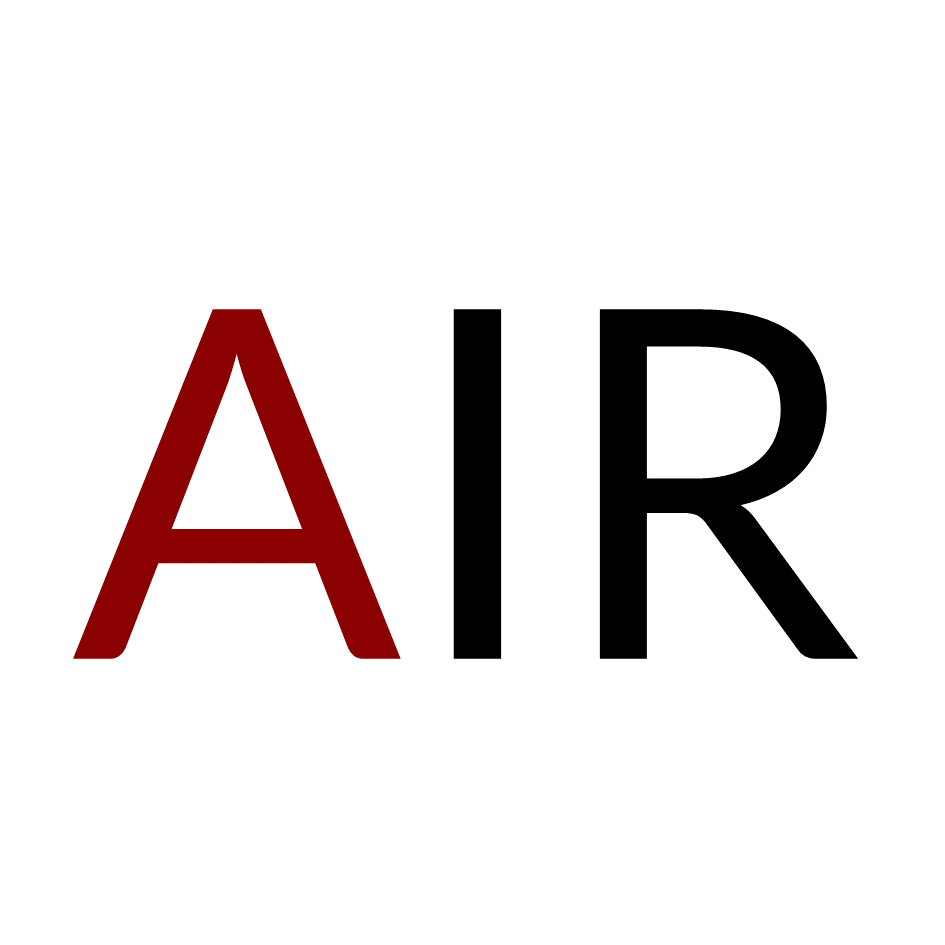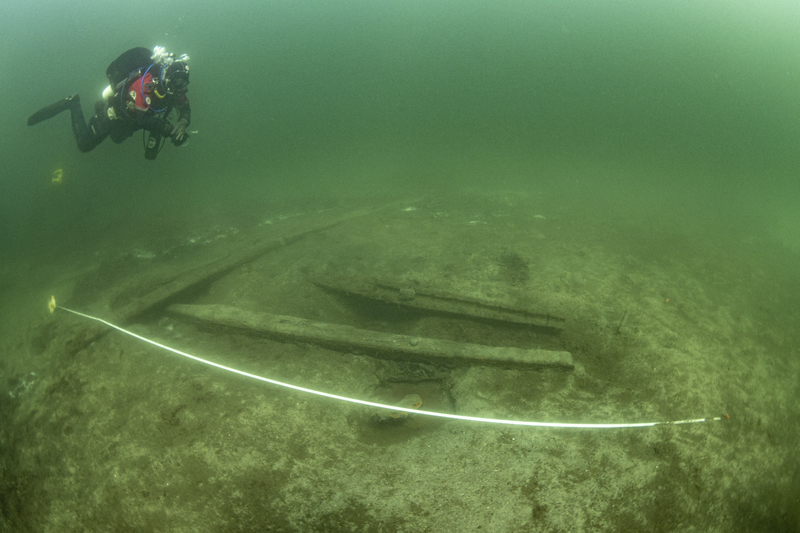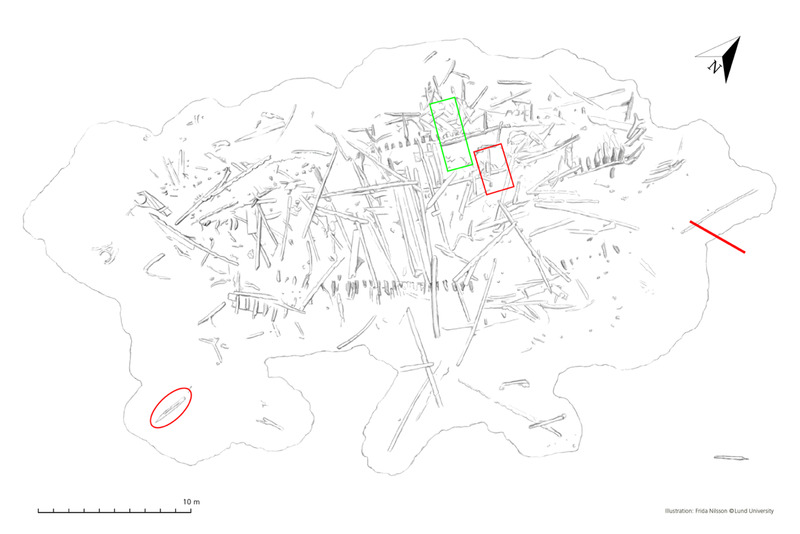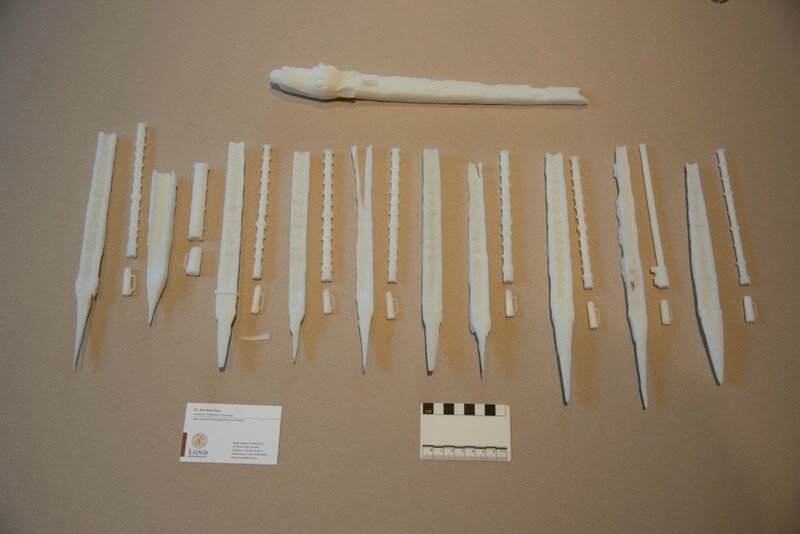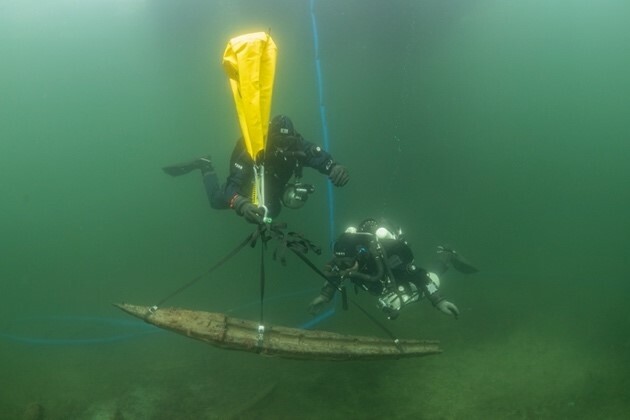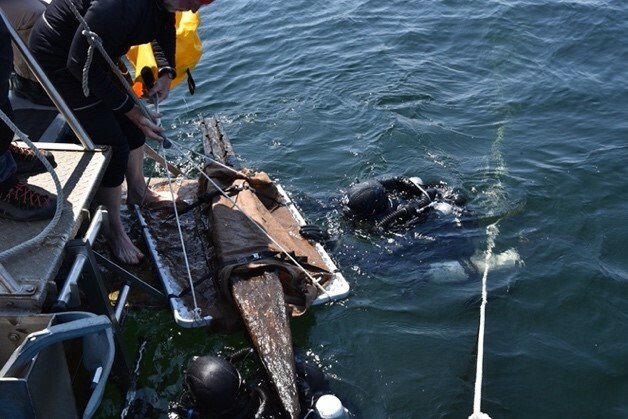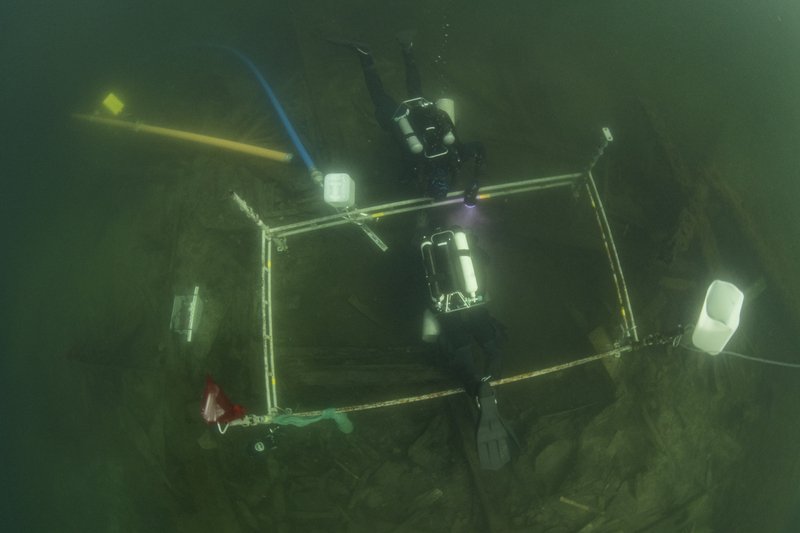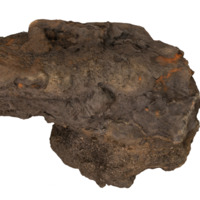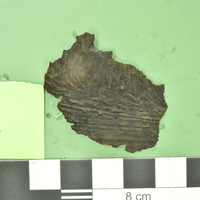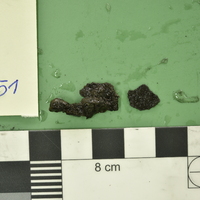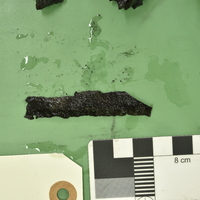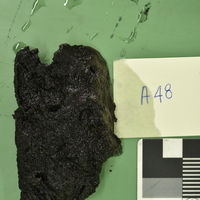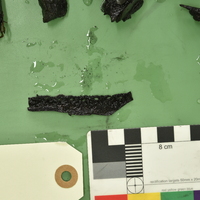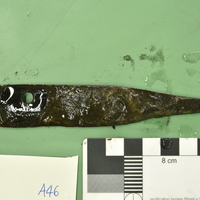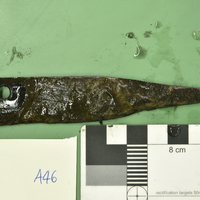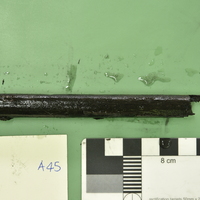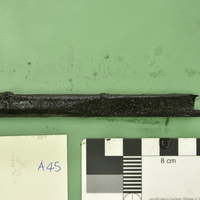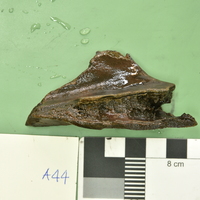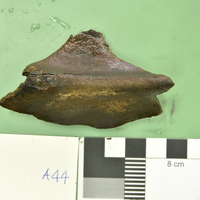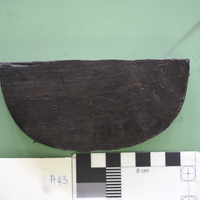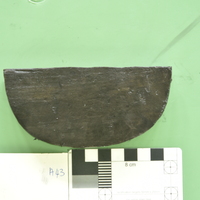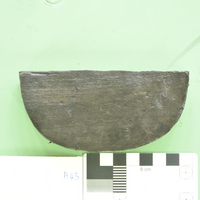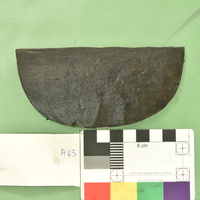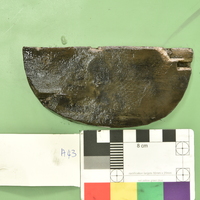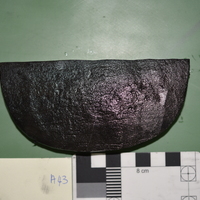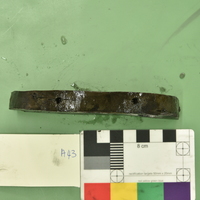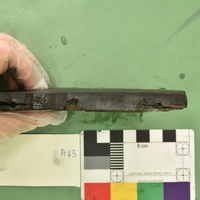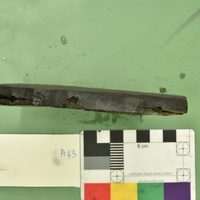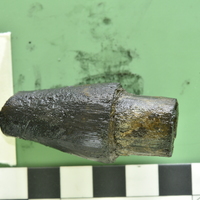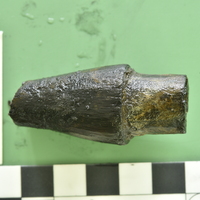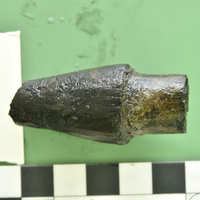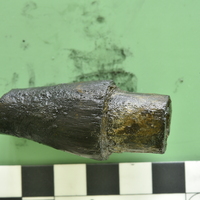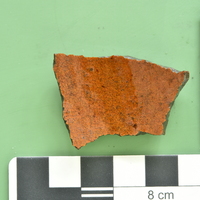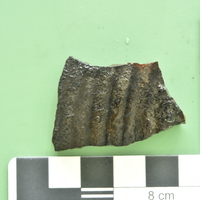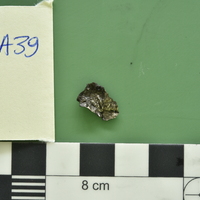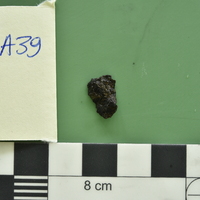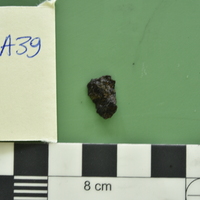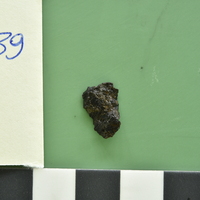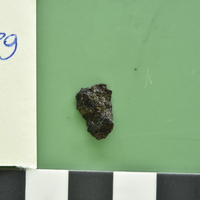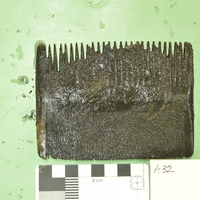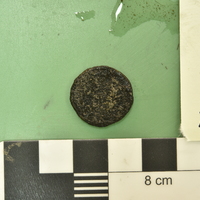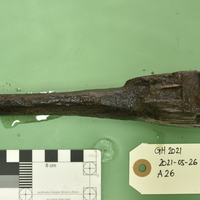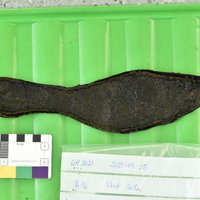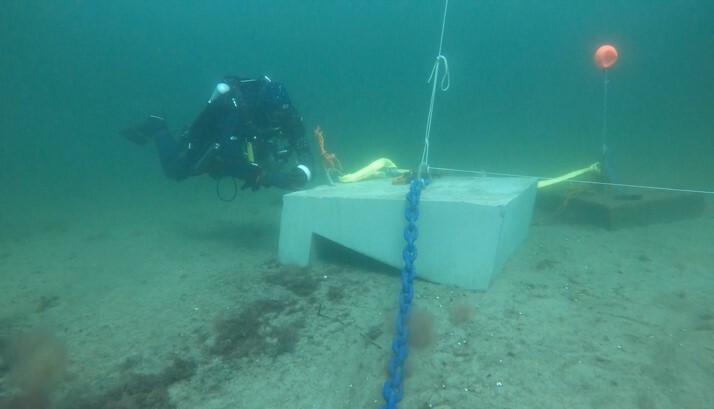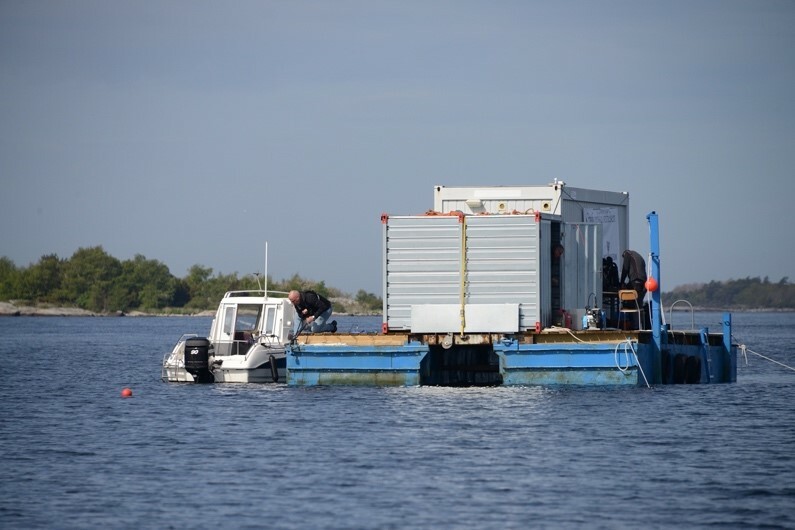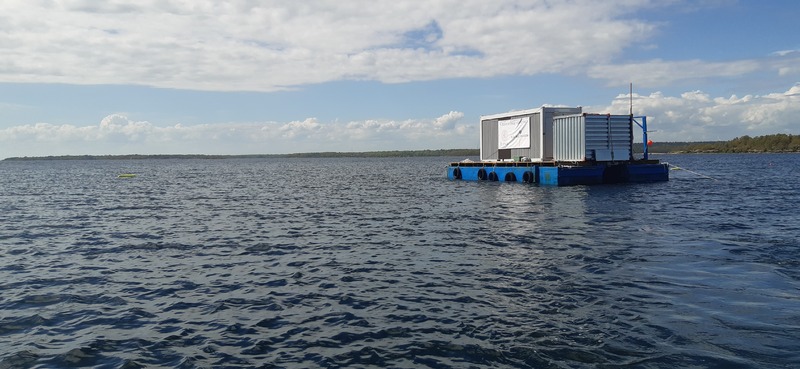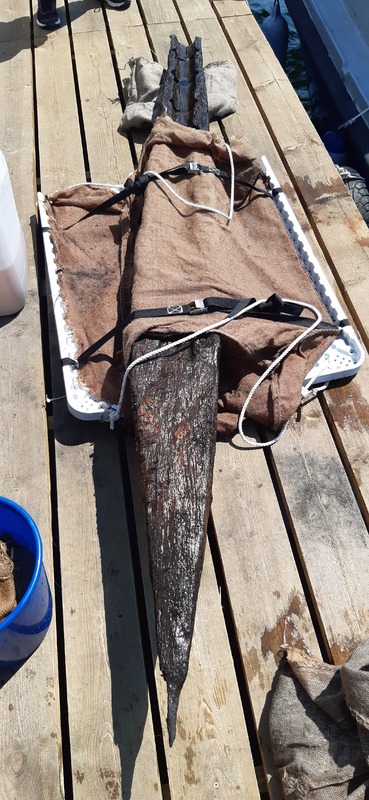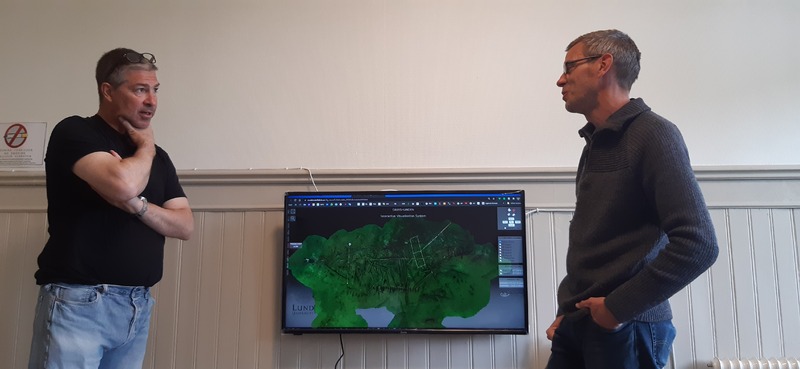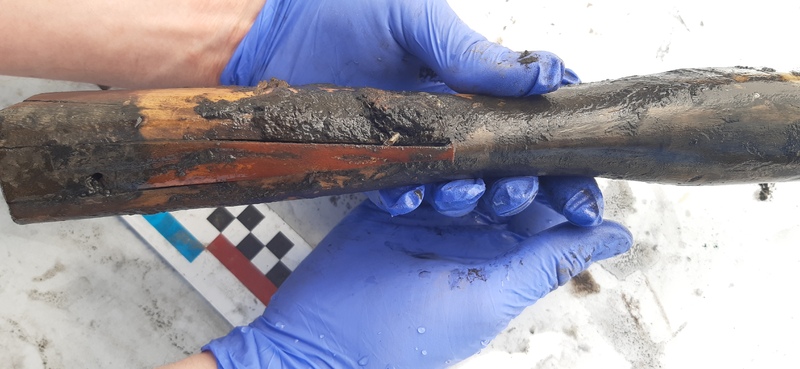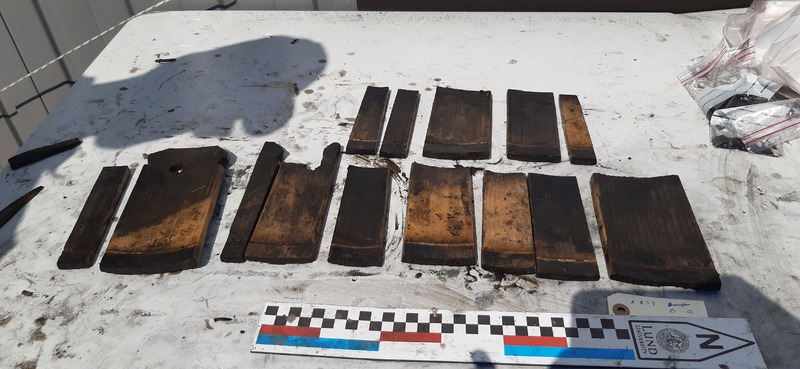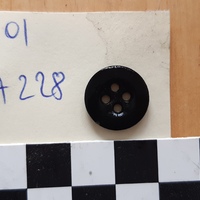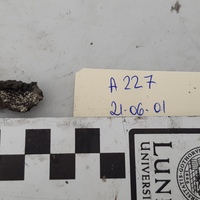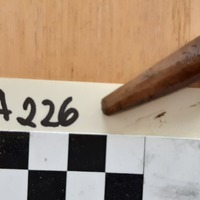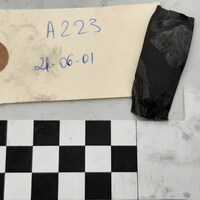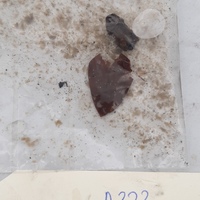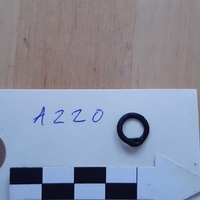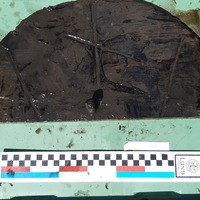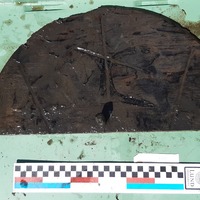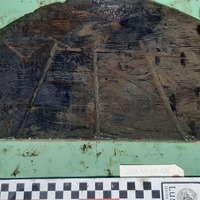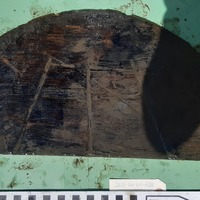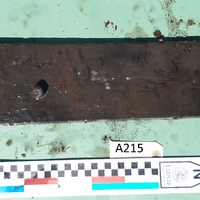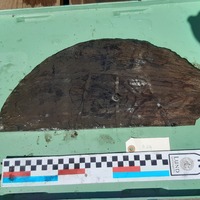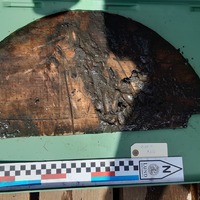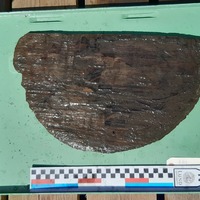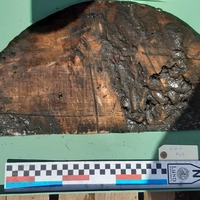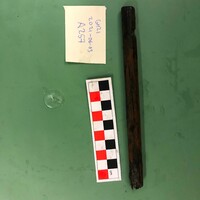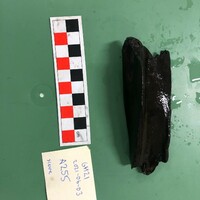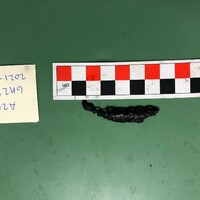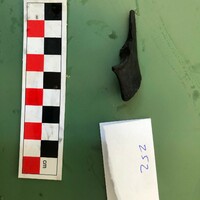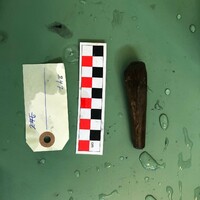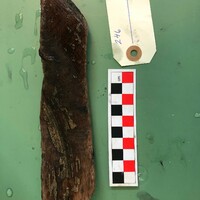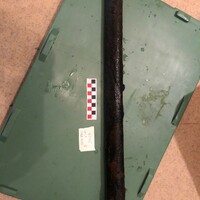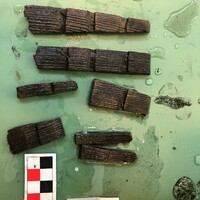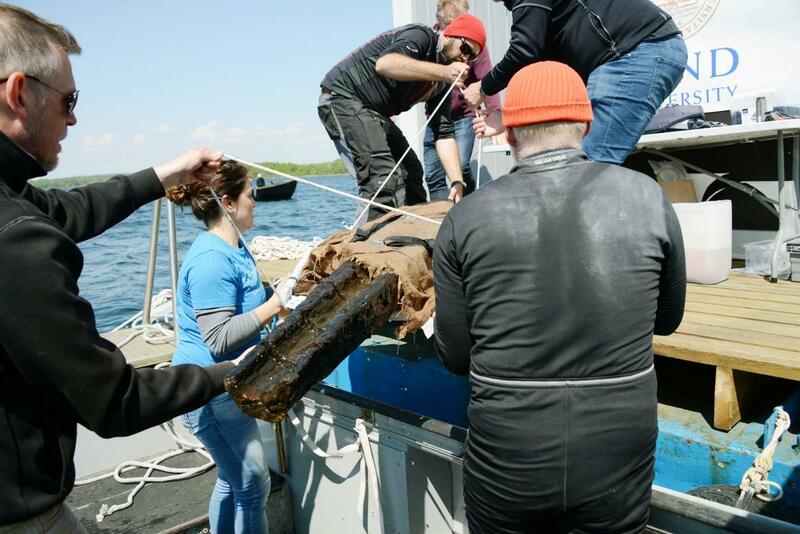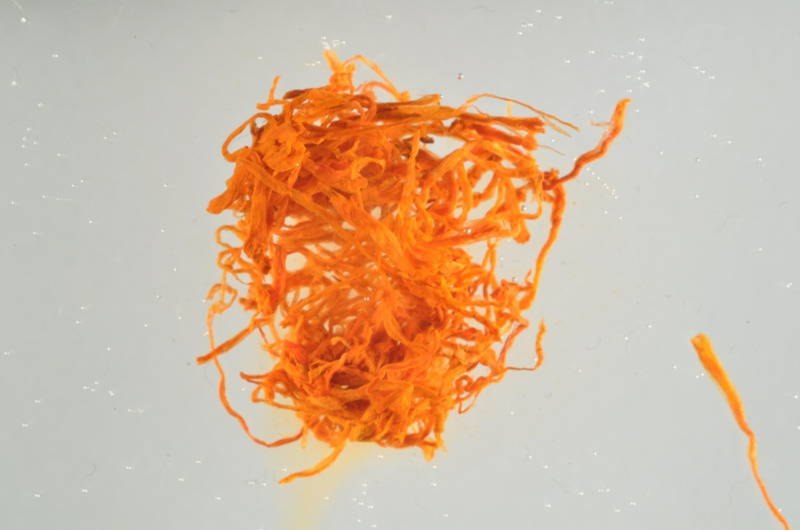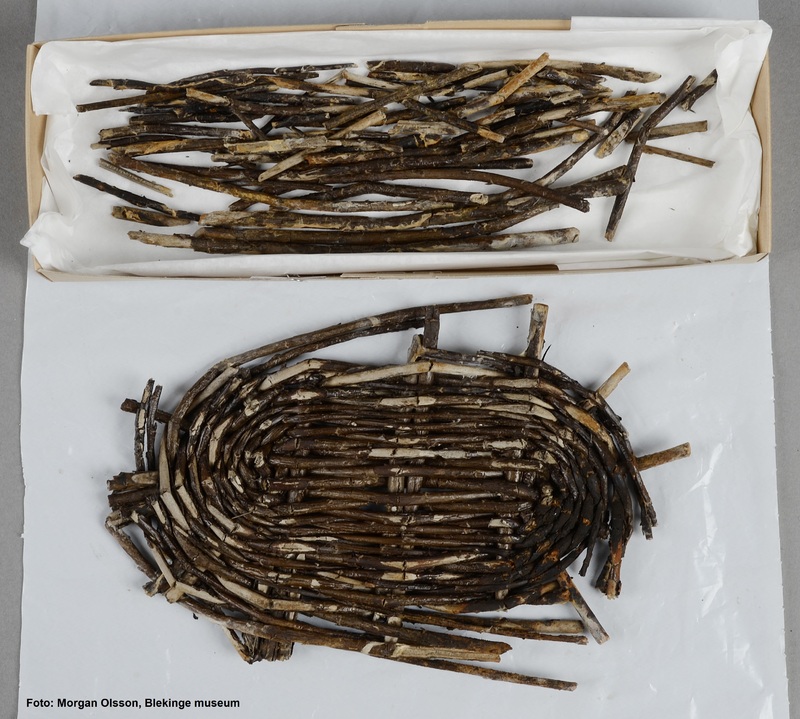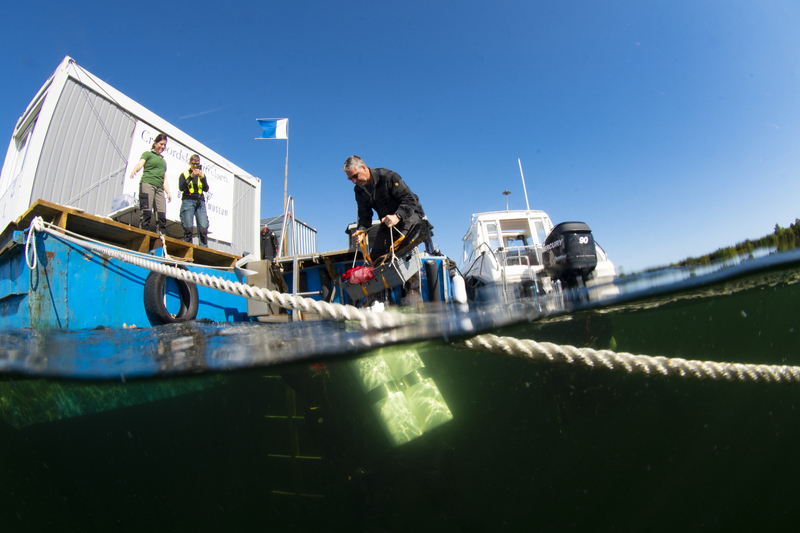Dates
Institutions
Blekinge Museum
Responsibles
Participants
Short, Phil
Björk, Mikael
Derudas, Paola
Jonsson, Marie
von Arbin, Staffan
Malmberg, Klas
- 1. GH2021 The mission and its objectives
- 2. GH2021 investigation of the earliest naval artillery
- 3. GH2021 Recovery of gun carriage for comparative study and provenance
- 4. GH2021 Excavation within the hull
- 5. GH2021 Diving and In-Water Operations
- 6. GH2021 Site Closure
- 7. GH2021 Artifact conservation and curation
- 8. GH2021 Archaeological Observations and Interpretations
- 9. GH2021 Artifact Class I: containers
- 10. GH2021 Artifact Class II: personal possessions
- 11. GH2021 Artifact Class III: weapons-related objects
- 12. GH2021 Artifact Class IV: foodstuffs/foodways
- 13. GH2021 recommendations for future research
The history of this vessel and the interventions on the wreck site are documented in a series of reports to Länsstyrelsen dating from 2001 through 2021, and in scientific journal articles, already published or pending publication(see references section). The fieldwork was conducted over three weeks under the direction of chief scientist Dr. Brendan Foley, jointly appointed at Lund University (LU) and Blekinge Museum (BM). All in-water activities were overseen by Diving Operations Manager Phillip Short. The support vessel captain was Jan-Erik Andersson. Other participants included archaeologists Marie Jonsson (Vikingeskibmuseet i Roskilde) and Mikael Björk (BM and LU), PhD candidate Staffan von Arbin (Goteborg University), and underwater photographer Klas Malmberg, Aquatilis. LU PhD candidate Paola Derudas recorded artifacts with assistance from BM staff, and constructed 4D time-series photogrammetric models of the site. This project falls under the Avsiktsförklaring for joint research that exists between Lund University and Blekinge Museum. The activity reported here was fully funded by a grant made from the CrafoordFoundation (reference number 20200003) to Dr. Brendan Foley, Lund University. This report is authored by Foley, with contributions from Paola Derudas, Marie Jonsson, Staffan von Arbin, Mikael Björk, Marcus Sandekjer, and Christoffer Sandahl. Mikael Björk translated the text from English to Swedish.
From 16 May until 5 June 2021, Blekinge Museum in collaboration with Lund University and with specialists from other institutions conductedarchaeological research including excavation and artifact recovery on the shipwreck known as Gribshunden. The site is located close to Stora Ekön, near Saxemara. The planned activities of the campaign were to investigate metal detection targets identified in a previous activity (November 2020), recover the gun carriage located off the port bow, and continue excavation in the stern section.The scientific objectives of these activities were to gain greater understanding of the shipboard artillery, and to begin investigation of the social division of space aboard the vessel. The results of the project include recovery of the gun carriage, discovery of a very large intact wrought iron gun in its carriage at the port quarter, and recovery of several high-prestige artifacts in the stern.
Following previous investigations on the Gribshundenshipwreck site, we have developed a series of historical and archaeological research questions which can only be approached through excavation of the site and recovery of artifacts. The archaeological potential of this shipwreck is tremendous. Avenues of inquiry involve understanding the vessel as a“floating castle”, with various functions including as a machine of war and an instrument of political and economic power; the physical organization of social hierarchy within the ship possibly reflecting or diverging from similar social constructs exhibited in castles on land; discerning cultural layers within the wreck context to explore questions of everyday life on board; further material associated with the Nordic Union meeting in Kalmar; and the events surrounding the foundering of the vessel. We focused on specific research queries during this excavation campaign.
Gribshunden was among the first generation of ships designed specifically to carry artillery. The ship carried a mixed battery of large gunpowder weapons, represented archaeologically by the remains of several wooden gun carriages. Nine carriages were recovered from the site in previous interventions (Einarsson and Wallbom, 2002). A tenth carriage was recovered during the 2021campaign. The environmental conditions at the wreck site have reduced the iron elements of most of the guns. However, one of the metal detection targets we identified in November 2020 proved to be a very large wrought iron gun, inverted and apparently intact in its carriage, and with two breech chambers adjacent to it on either side. We documented this weapon, and left it in situ off the port quarter of the wreck for possible future recovery (See figure 1 & figure 4). We recovered one of the breech chambers (find A7), and at LU scanned it with X-Ray Computed Tomography and performed chemical analysis of the residue contained within the chamber. Results are pending, and will be published in scientific journals and presented at the 7thInternational Congress of Underwater Archaeology in Helsinki, June 2022.
LU researchers have digitally reconstructed approximations of the missing guns from the voids carved into the wooden carriages that were recovered in 2002. The guns and their carriages have been 3D printed at LU, allowing easy comparison of the artillery pieces in the battery (see figure 2). This study has revealed that Gribshunden carried at least three different varieties of guns: small-bore long guns constructed of wrought iron staves and hoops; large-bore short guns constructed of wrought iron staves and hoops; and small-bore long guns perhaps constructed of cast metal (bronze or iron). Preliminary dendrochronological studies of the carriages to determine the date and place where the trees were cut are as yet inconclusive, but positive results possibly may be obtained with a larger sample size. To advance both of these research efforts, we recovered one wooden gun carriage (A237) for dendrochronological analysis, study and publication, conservation and curation, and public exhibition (see figure 3a & figure 3b). A237 has now been 3D modeled by LU researchers, in cooperation with BM staff.
We believe that gun carriage A237 was moved from its original depositional location sometime between 2002 and 2019. None of the previous archaeological reports show it in that position, but in 2019 the carriage was observed in its recovery locus. A237 perhaps was recorded in 2002 as lavett #13 or #14, both located portside aft at the time. Its partner, either #13 or #14, is no longer visible on the sea floor. It is possible this gun carriage was looted from the site.
Gribshunden was among the first purpose-built sailing warships in northern Europe. We hypothesize that enduring international naval traditions regarding the social division of space aboard warships have their origins in vessels like Gribshunden. To test this hypothesis, we selected for excavation an area in the stern of the ship where we suspect the highest-ranking officers and nobles, including King Hans, would have been stationed. Trench 2 is within the hull, extending from slightly inboard starboard to within approximately 1.5 m of the ship’s centerline. This position is slightly aft and inboard of the excavation conducted in 2019 (see figure 4).
Finds in the trench included several hand weapons and accessories, mail armor elements, accessories related to the artillery, wooden casks, a woven basket recovered en bloc (awaiting conservation), a silver coin, personal possessions including shoes and a comb, a large amount botanical remains including exotic imported spices/medicines, and osteoarchaeological remains of foodstuffs. Complete finds lists of artifacts and samples, archaeobotanical remains, and ostearchaeological remains are attached here as appendices.
All diving conformed to the Swedish diving legislation AFS 2010: 16 and was planned and risk-assessed accordingly. The 2021 activity was conducted by a team of maritime archaeologists and specialist professional divers. This entire group has worked together on Gribshunden in 2019 and 2020. Several team members have worked together extensively on complex international archaeological operations. All of the archaeological divers carry the S30 Scientific Diving qualification, or equivalent (or higher). In addition, four team members hold S30 and A40 Dykledare certifications, or beyond.
Diving was performed from a barge moored over the wreck site, equipped with an office trailer and an equipment locker. This provided a stable all-weather platform to support operations. To secure the diving support platform over the site, we positioned four 1.5-ton concrete moorings equipped with proper ground tackle consisting of 2.75 m of 20 mm short link chain, connected to the blocks with 22 mm (7/8 inch) screw-pin bow shackles (see figure 5a and figure 5b). These heavy moorings can secure larger surface support platforms, and are an investment in the future of the Gribshunden project.
Metal detection: The divers deployed Aquascan AQ1B metal detectors as described in Blekinge Museum Rapport 2021 : 4. The metal detectors identified a metallic target that proved to be a large wrought iron artillery piece at the port quarter of the wreck previously discovered during the 2020 campaign. The detectors also indicated strong metallic targets within the excavation trench, which proved to be an iron anchor and an iron tube or rod. Both of these features extended beyond the limits of the trench, and were left in situ.
Excavation Equipment: The team utilized a hydraulic dredge fed from the surface by a gasoline powered water pump. The excavating archaeologists took utmost care to prevent any important material from being drawn into the dredge; but despite best efforts some objects inevitably did travel through the dredge. The risk of information loss was minimized by attaching a mesh bag to the effluent end of the dredge. This captured any small artifacts inadvertently missed by the excavators, while allowing sediment to disperse. The mesh bag was recovered at the end of each dive cycle, and the material sorted by hand on the diving support platform (see figure 6).
Diving Equipment: The diving methods consisted of open-circuit scuba and closed-circuit rebreather, as described in Blekinge Museum Rapport 2021 : 4.
Dive Recording: Each dive team was equipped with at least one head-mounted video camera (Paralenz or GoPro) to record all activities underwater. Video files are archived at BM and LU.
Site Recording: The excavation was documented by digital still photography and video, similarly to the 2019 campaign. Lund University researchers processed the data to create photogrammetric models of the trench in a time series, following the excavation progress.
Water Quality Assessment: We deployed from the deck of the support platform water quality sondes connected to a YSI ProDSS instrument. The instrument recorded GPS position, time, and barometer reading. The sondes connected to the instrument by a cable measured pH, Oxidation Reduction Potential (ORP), Optical Dissolved Oxygen (ODO), salinity, conductivity, temperature, depth, conductivity and resistivity. The procedure is as described in Blekinge Museum Rapport 2021 : 4.
For site closure in 2021, after consultation with experts regarding the benefits and drawbacks of geotextiles and sediment backfilling, we employed a new practice. Many pieces of firewood were scattered around the excavation locus, extracted from the 2019 and 2021 trenches. Some samples of this firewood were collected in 2019 for study; the remainder is of minimal archaeological value. At the close of the 2021 campaign, we gathered this firewood and placed it into textile bags, which were then placed into larger Tyvek bags. Disarticulated wooden cask staves not selected for recovery and study were similarly placed in bags. The Tyvek bags with the internal bags containing the wooden objects then were placed into the trench to backfill it. These were weighted with sand bags; the sand was purchased from a building supplier, and it is expected that the double-bagging process will prevent contamination of the wreck site as far as possible. By this practice, the volume of the trench was filled quickly and without disrupting the integrity of the surrounding site and sea floor. Because this backfill is contained in bags, it can be easily and quickly removed in the future, should the trench need to be re-opened. Similarly, if future research questions are posed of the firewood and cask component material contained within the bags, recovery will be simple.
Artifact conservation is fully funded and is being conducted primarily by Max Jahrehorn of Oxider AB, Kalmar. All conservation actions are performed in consultation with Christoffer Sandahl and Brendan Foley. Upon conclusion of conservation, all artifacts will be curated at Blekinge Museum. An interim conservation strategy report is appended here.
The 2021 excavation produced more than 200 artifacts and samples, which can be divided into four broad categories.
1. containers: wooden casks for provisions and supplies, woven basket, wooden pail
2. personal possessions: shoes, comb, coins
3. weapons-related: crossbows and accessories, artillery and accessories, edge weapons, mail armor
4. foodstuffs/foodways: osteoarchaeological remains, archaeobotanical remains including exotic spices
Archaeological interpretation of these objects is ongoing by the assembled group of researchers, with the addition of other scholars representing various institutions as appropriate. Extensive interdisciplinary studies of recovered artifacts are underway with specialists around the world according to needs and expertise.
The excavation trench locus was selected to minimize site interference while maximizing retrieval of archaeological information. This area has been disturbed previously. A single deck beam is evident in this sector, with the rest probably removed during salvage actions immediately after sinking or sometime in the years following. Despite the disturbance of this locus, it proved to be rich in particularly compelling artifact finds.
A small iron anchor is lodged in the trench. The iron is badly degraded, and a fluke that broke from it was recovered (find A8). The anchor might be original to Gribshunden, perhaps a kedge anchor or an anchor for the ship’s boats, stored in the hold. Alternatively, it might be anachronistic, introduced into the wreck during salvage efforts in the decades after the sinking event, or at some later point when a vessel seeking shelter in the anchorage inadvertently caught and lost its hook in the structure.
Selected artifacts are presented here, representing the most important objects retrieved from the excavation.
In the northwest corner of the trench, a stave-built wooden pail (finds A239A-Q) appeared in the wall of the trench during the removal of sediment to reveal crossbow find A238 (see figure 10 and figure 11). The artifact was approximately 30 cm below the sediment surface. The pail’s hoop had disintegrated and therefore its staves were falling into the trench. The decision was made to recover the staves and bottom of this container. This was accomplished, with the exception of one or two staves at the back side of the pail. Retrieval of those final components must await excavation from the top of the locus, as this was beyond the scope of the 2021 operation.
The upper stratum of the sediment in the trench, and in fact all strata, contained firewood and disarticulated wooden cask components. This material was consolidated into bags and placed into the trench at site closure as described above. No firewood was recovered for study in 2021, since some pieces already were recovered in 2019. The trench also produced four mostly intact wooden casks, which were disassembled and recovered as groups for dendrochronological analysis. This topic was one of the research problems enumerated in the 2021 excavation permit application. Scientists at LU analyzed all of the recovered cask elements, and results of this study were submitted for scientific publication on 1 March 2022. The manuscript is titled “Casks from Gribshunden (1495) – Dendrochronology of Late Medieval Shipboard Victual Containers” and currently is under peer review with The International Journal of Nautical Archaeology.
Removal of the cask in the southwest section of the trench revealed a woven basket. A smaller woven basket encountered in the 2019 Gribshunden excavation was not recovered intact, at the direction of that project’s permit holder. The unanimous consensus of the 2021 archaeological team was that we should attempt recovery of the 2021 basket en bloc so that the best effort could be made to preserve the container intact. We note that during the excavations of the English warship Mary Rose (1545), some of the woven baskets were recovered complete, and contained items related to the gunners. The 2021 recovery effort was undertaken successfully and the contents of the basket, if any, will be exposed when the conservation scientist and project archaeologists remove the sediments in the laboratory.
Pinned beneath the woven basket was an object that appears to be a generally complete fine leather shoe (find A84). Elsewhere the trench produced two other portions of shoes (find A16 and find A59). These finds represent three different styles of footwear. After conservation, comparison will be made with contemporary 15th century shoes in museum collections in Copenhagen, Stockholm, and in other institutions.
A well-preserved double-sided comb (find A32), presumably of boxwood, sat directly upon the flint ballast pebbles in the deepest excavation stratum. The find locus was the center of the southern half of the trench. From the same locus, a degraded silver coin (find A31) was recovered (see figure 12).
Noteworthy finds in the trench are numerous crossbow elements, representing as many as eight or nine weapons, with four nearly complete except for their composite prods and iron triggers. Initial interpretation of the crossbows suggests a central European origin, perhaps German/Austrian, dating to the second half of the 15th century. The concentration of crossbows in the trench suggests that small arms were stored in this area of the ship (figure 8). It is likely that additional undiscovered crossbows are adjacent to the trench to the northwest and northeast; two of the recovered crossbows (A173 and A249) extended beyond the arbitrary confines of the trench, requiring the excavators to work several centimeters beyond the trench border to recover the exposed artifacts.
Crossbow accoutrements recovered in context with the weapons include a variety of quarrels intact except for their metal points, a possible wooden quiver and its bottom (A21 and A43), and two birch bark panels decorated with animal and floral motifs (A17 and A103). The birch bark panels might be coverings for the composite prods of crossbows. Composite prods were made from laminated sinew, horn, wood, sometimes baleen, adhered with glue, and wrapped with birch bark for moisture resistance. The best glues were made from sturgeon swim bladders; this provides additional context for the sturgeon in the cask recovered in 2019. Alternatively, the birch bark panels might be decorative elements of an undiscovered object such as a bolt box; see for instance the “Box For Crossbow Bolts (Bolzenkasten), Probably Made for William IV, Duke of Bavaria (r. 1508–50)” Metropolitan Museum of Art Accession Number: 69.199.
Both Gribshunden panels exhibit swirling floral patterns. A peacock is one element of the first panel (A17) (see image appendix A). Exotic imported animals were desirable features of royal courts and elite landscapes in the medieval period. Two peacocks were buried in the Gokstad ship, circa 900 AD, and osteoarchaeological remains of a peacock have been excavated from a 15th century context in Lund, Skåne. The entire A17 motif appears to be oriented vertically (ie: ‘portrait’ as opposed to ‘landscape’). The decoration of the second birch bark panel (A103) is arranged horizontally, with a “T” shaped incision (see image appendix B). It features an equine, possibly a unicorn. Another animal, perhaps a dog, is positioned near its front legs. Birds are apparent among the floral swirls. This could be a hunting scene. Hunting motifs are known from crossbows stocks, but no examples survive of similar motifs on prods. If the animal is a unicorn, it opens a variety of interpretive possibilities which will be explored by the Gribshunden project’s researchers in collaboration with medieval art historians.
The motifs of both panels are partially obscured and degraded. After conservation, we will attempt to reveal the entire pattern by non-invasive methods. These techniques may include Raman spectroscopic imaging, X-Ray Fluorescence, and/or dynamic illumination.
In the northeastern portion of the trench, at the locus of crossbow, portions of a “bollock dagger” were recovered. These include the weapon’s distinctive shaft and spherical protuberances (A144) and a patterned metal end cap of the handle (A152).
Along the bottom of the trench at its midpoint, excavation exposed a portion of an apparently cylindrical iron rod or pipe. It may be a handgun similar to a weapon on display in the Danish National Museum. It runs fore-and-aft through the trench and beyond on both sides. This object was left undisturbed and not assigned an artifact number.
In addition to the large artillery piece discovered off the port quarter, the excavation revealed other artifacts relating to the main guns. In the southern corner of the trench several pieces of light three-strand twisted cordage about 1 cm in diameter were recovered (A72). It may be a very light rope for general use, but it may be fuse cord used to light the artillery charges. Strengthening this interpretation is that immediately adjacent to the cord an intact linstock (A73) was recovered from underneath one of the wooden casks (figure 9). The handle of the linstock bears an incised symbol: two vertical lines crossed diagonally by a single line. This may be the mark of the gun captain. These are the earliest known examples of a linstock and fuse cord.
Several disarticulated brass rings, presumably from mail armor, were recovered from the trench. While most of these were the usual riveted wire loops, two were solid circles apparently cut from brass sheet (figure 10). These may have served a different and unknown function, unrelated to armor.
Bones of fish and animals were present throughout the excavation area. The diving archaeologist collected these by hand, and others were extracted on deck from the dredge spoil contained in the catchment bags. See the osteoarchaeological finds list attached.
In the category of foodstuffs/foodways, the most important materials recovered in the 2021 excavation are a variety of imported spices. The trench produced a large quantity of saffron (about 4 dl) from several discrete deposits in a confined locus, and peppercorns (figure 11). Concentrations of other potential spices were observable in the vertical section of the trench; these were left undisturbed for future investigation. The team collected two one-liter sediment samples for analysis at LU by the project’s archaeobotanist, revealing almonds, cloves and ginger among many other plant remains. The saffron, cloves, and ginger from Gribshunden are the only finds of these spices in the medieval Scandinavian archaeological record. These finds confirm medieval written references to consumption of these botanicals, and provide insight into the elite environment aboard the king’s flagship.
The importance of the Gribshunden archaeological site cannot be overstated. The wreck encapsulates a pivotal moment not only in Scandinavian history, but in world history. This unique lens brings into focus several late medieval macroscale societal changes: globalization, transition from barter/bullion to specie economies, consolidation of nation-states, embrace of new technologies including world-ranging ships carrying artillery, and utilization and depletion of resources. At the same time, the wreck’s artifacts deliver fascinating microscale details to bring to life the players in these actions: foodstuffs, personal possessions and clothing, hand weapons, artwork. The quantity of new information recovered in our recent interventions is impressive, even though the excavation trenches represent about 1% of the total volume of the site.
We recommend data collection and physical intervention on this site across three levels of effort: minimally intrusive survey, recovery of certain exposed objects, and continued excavation at selected loci.
1) Minimally intrusive survey
Future research should include study of the essential characteristics of the ship’s construction. This can be accomplished with minimal disturbance to the site by 3D modeling features such as the stem, rudder, tiller arch, gunwales, and other components. Accurate measurements must be taken of deck beams, knees, and planks. A virtual reconstruction of the vessel is feasible through these methods.
2) Recovery of certain exposed objects
Recovery of exposed artifacts should continue. Retrieval of the “armorer’s toolbox” near the bow should be considered. This conglomerate object is periodically exposed, then covered by seasonal marine algae deposition; during the 2021 campaign, a thick blanket of decaying algae hid the object from view. When exposed, it becomes a target for looting by unauthorized divers.
The large artillery piece discovered in the 2021 campaign may also be recovered, providing sufficient budget exists for its conservation. This is the largest medieval shipboard artillery piece known. Study of it in relation to the other guns in this ship’s battery and compared to the batteries of other vessels will provide insights into how ships of this type projected state power through violence.
3) Continued excavation
Excavation should be performed only in the service of answering historical and archaeological hypotheses. We believe further excavation is warranted because this ship is unique in the range of questions it can satisfy. As a proxy for the ships of exploration, Gribshunden can show us how the vessel was spatially organized and how the hierarchies of society on land were squeezed into the limited space of a complex seagoing machine. How different were the onboard experiences of the crew and the noble passengers? Sequential excavation of small trenched along the length of the vessel will reveal these differences, if they exist.
These excavations will also provide information about the ship as a symbol of state power and royal prestige. Hans used his flagship personally and extensively, a practice uncommon among medieval rulers of other states. How did King Hans utilize Gribshunden as a “floating castle”, his mobile base for state functions? What can this reveal about Hans as an individual, and the politics of the Nordic region generally?
Each excavation on this site (2006, 2019, 2021) has delivered surprising and unprecedented finds. Future archaeological research is certain to be equally productive.


















| Plane | Position | Flip |
|
|
||
|
|
||
|
|
| Show planes | Show edges |
0.0
[ 0 , 0 , 0 ]
